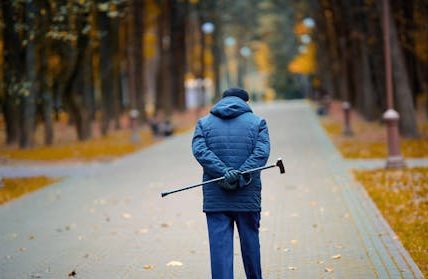Who is Iran’s leader, Ayatollah Ali Khamenei?
Ali Khamenei was born in Mashhad, Iran, in 1939, as the second son of a local religious leader, Javad Khamenei, and he grew up in relative poverty.
He learned to read the Qur’an in early childhood before attending a theological seminary school in Mashhad. At 18, he travelled to Najaf in central Iraq to study Shia jurisprudence, but was later asked by his father to return. He was a student of Ayatollah Hossein Borujerdi and Ayatollah Ruhollah Khomeini.
There is not much known about Khamenei’s family life, except that he is married and has six children. Khamenei’s interest in poetry is a well-known part of his public persona. He often cites poems in his speeches and hosts poetry gatherings where pro-government poets gather to read their poems to receive his comments. Khamenei’s interest in literature is quite rare among religious clerics. The same goes for his interest in gardening.
Get your news from actual experts, straight to your inbox. Sign up to our daily newsletter to receive all The Conversation UK’s latest coverage of news and research, from politics and business to the arts and sciences.
In the 1960s and 1970s Khamenei was involved in protests against the US-backed monarchy (the shah), and was an ardent supporter of Ayatollah Ruhollah Khomeini, then living in exile, and against the “westernisation” of Iran. This led to his arrest by the shah’s secret police and intelligence operation, the Organisation of National Security and Information (Savak), which suppressed opposition to the shah.
Mohammad Reza Shah Pahlavi, the monarch who ruled Iran until 1979, was backed by western powers including the US and the UK. After a decade of economic growth in Iran, mainly based on oil revenues, did not lead to an improvement in the standard of living for ordinary Iranians, a combination of students, intellectuals and clerics created combined support for a revolution.
After the shah was overthrown in the 1979 revolution, Iran became an Islamic republic. Khamenei was appointed as a member of the Islamic Revolutionary Council, which was put in place to manage the revolution, and served as deputy defence minister and led Friday prayers in Tehran, which was considered highly prestigious.
The new republic adopted an anti-western “imperialist” foreign policy. This is known as “global arrogance” (Estekbar Jahani) in Iranian post-revolutionary discourse.
In 1982, he was elected president of the Islamic Republic of Iran, winning 95% of the vote, after the previous president, Mohammad Ali Rajai, was killed in a bomb attack in Tehran. Khamenei had been the target of an assassination attempt two months earlier, leaving him with serious injuries and paralysis in his right arm.
Iran’s supreme leaders reacts to air strikes by Israel and US rhetoric.
Iran’s war with neighbouring Iraq, led by Saddam Hussein, lasted from 1980 to 1988 and is known in Iran as the “sacred defence”. The war began after an invasion by Iraqi troops on Iranian territory and resulted in around one million deaths across both countries.
This was another significant period in Khamenei’s career. He was active in managing Iran’s defence as the chairman of the supreme council of war support during this period. The council was formed to make sure the country was as prepared as possible during the war and to take measures to mobilise forces and to meet the needs of the war at the battlefront.
Read more:
Why Israel’s air strikes signal a shifting relationship with the US and a weakening Iran
He also commanded the Islamic Revolutionary Guard Corps, an elite part of the Iranian armed forces, from 1981. At the end of the war, Khamenei claimed Iran had won a “luminous victory”.
He praised Khomeini for his tactics in the war and said that the supreme leader had realised from the very beginning that it was not an ordinary conflict between two neighbours. “He recognised the enemy and realised that the main enemy is not present in the war, and he recognised that Saddam is just a tool.”
He went on to suggest that this was a war about US regional power and that Saddam Hussein would continue to receive US support.
Rising to supreme leadership
Khamenei became supreme leader in 1989 after the death of Khomeini. He was designated as the new leader by the Assembly of Experts, an 88-member body of Islamic clerics. He ruled in the same style, and with the same type of foreign policy, as his predecessor; looking for allies to offset US power in the region.
The duties designated for the rahbar (supreme leader) are listed in Article 101 of the constitution and range from determining the political direction of the government (in consultation with an advisory committee) to commanding the armed forces to declaring war, peace, and the mobilisation of armed forces to pardoning or commuting sentences upon recommendation of the head of the judiciary.
Khomeini’s conception of Islamic government was centred on the doctrine of the guardianship of “the jurist”, known as velayat-e faqih, and this continued at the heart of the government that followed under Khamenei. This gives the supreme leader extensive powers, including control over the military, judiciary and media.
This doctrine plays a vital role in legitimising theocratic power in Iran, linking religious authority with the state. Discussion about velayat-e faqih continues within Iranian society as part of an ongoing dialogue between traditional religious authority and civil society.
Read more:
Trump’s unpredictable approach to Iran could seriously backfire
The question of who might come to power after Khamenei was raised during the grassroots uprising and pro-democracy protests around Iran in 2022 and 2023. It was expected that any transition would take a considerable amount of time, especially if the aim was for a more democratic form of government.
The current war might suggest a different outcome. Even though the Israeli attacks on Iran have again sparked discussion of a possible change of leader, the public is focused now on their own safety, and defending Iran, not on political change.
Any external war or threats coming from outside Iran has historically united Iranians against aggressors. This means that the path to democratic change is not likely to be created, or helped, by Israeli air strikes or US threats.
Sahar Maranlou does not work for, consult, own shares in or receive funding from any company or organisation that would benefit from this article, and has disclosed no relevant affiliations beyond their academic appointment.



